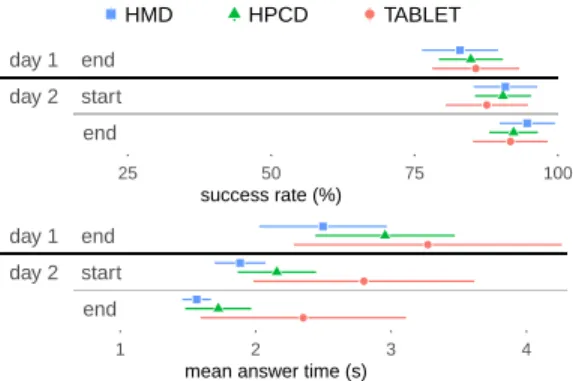When High Fidelity Matters: AR and VR Improve the Learning of a 3D Object
Texte intégral
Figure




Documents relatifs
Objectives: The aim of the study was to assess acceptability and usability of a new VR simulator for procedural skill training among scrub nurses, based on
For each of the viewing position factors (unchanged or changed), the cost of the mental rotation was com- puted as the difference between the average perfor- mance when there was
Figure 3: 3D Estimation on a Stanford Bunny with stereo images: Top image illustrates the SURF Stereo matching were features are detected and their descriptor is used to find
Our research, therefore sought to analyze the impact of motion parallax, generated by the driver, while he moves his head horizontally and vertically from his initial frontal
We have designed an experimental setup based on a Microsoft HoloLens and a haptic force-feedback device, enabling to press a virtual piston, and compare its stiffness successively
Therefore, we introduced an additional component “Library” to MVC model (see Fig.1) that encapsulates all processing using specific algorithms (e.g. tracking techniques,
This work proposes a model for the production of virtual reality learning en- vironments, in the proposed model design and interaction artifacts are presented, also the inclusion
However, when the target and the cursor are of a different type, the depth cues provided by the two kinds of rendering would interfere, leading to potential unusual biases. Moreover,